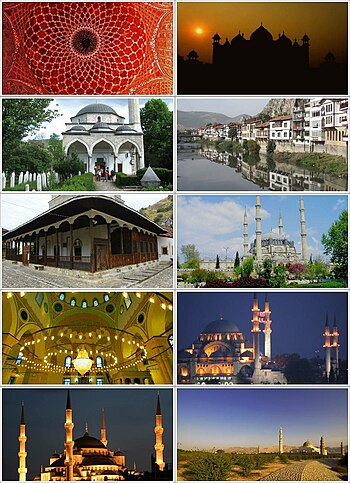We have just completed week 3 of our Tapestry of Grace studies on the Rise of Islam. A fascinating subject where we learnt a great deal! I am very excited to share two wonderful video links which greatly enhanced our study.
The first is this informative PBS documentary narrated by Ben Kingsley about Muhammad and the birth of Islam.
The second is a brilliant promotional film (1001 Inventions and the Library of Secrets) from a highly acclaimed travelling exhibition called - 1001 Inventions: Discovering The Muslim Heritage In Our World. The short film itself has won many awards and accolades. It is a fine introduction to the achievements and influence of Muslim inventions to our modern world.
We decided on two hands-on activities this week. We constructed a diorama of an Arabian marketplace and we also made a simple study of Islamic art and concentrated on a project about Geometric Art.
The Diorama:
This was was quite a time-consuming project and we've stretched it out over a few weeks. I spent a some time before our project collecting empty cereal boxes, tissue boxes, toilet rolls and cardboard boxes. I also pulled out clothespin pegs, dowel sticks, a few remnant fabrics and old clothes that they could cut and use to dress up their people and stalls. I also purchased clay in case they wanted to make clay people, animals and foods.
First, they found a cardboard base on which to set their market place (we used these great sturdy cardboard wrapping used by the Book Depository to protect our books.)
Next they decided which boxes they would use - tissue boxes were the most popular as they had a nice squat square shape.
My older daughter decided to cover her boxes in newspaper and paint them.
The Diorama:
This was was quite a time-consuming project and we've stretched it out over a few weeks. I spent a some time before our project collecting empty cereal boxes, tissue boxes, toilet rolls and cardboard boxes. I also pulled out clothespin pegs, dowel sticks, a few remnant fabrics and old clothes that they could cut and use to dress up their people and stalls. I also purchased clay in case they wanted to make clay people, animals and foods.
First, they found a cardboard base on which to set their market place (we used these great sturdy cardboard wrapping used by the Book Depository to protect our books.)
Next they decided which boxes they would use - tissue boxes were the most popular as they had a nice squat square shape.
My older daughter decided to cover her boxes in newspaper and paint them.
My younger daughter decided to cover hers in colourful crepe paper. She then used dowel sticks broken in half and stuck into the boxes to create the structure for their awnings over their shops. She used a mixture of fabric and crepe paper for the awning.
My younger daughter used pieces of cardboard to create baskets and windows for her buildings. And she used clay to make pots and jugs.
My oldest created little clay fruit for her market stall and also molded a donkey with a cardboard pack to help carry goods.
The people were made using clothespin sticks and wrapped in various fabrics.
I let them do it all by themselves and I think they did a great job all on their own.
Geometric Art
We started off with a look at Islamic art in general by watching this video (we only watched the first episode).
The video above is a shorter and quite informative BBC documentary that talks about how Islamic art has influenced western art.
We then went on to explore geometric art using this lesson from the Metropolitan Museum. It was excellent and I highly recommend it. We were taken through elements of geometric art step by step.
We started off by drawing circles with a compass and more circles at intersecting points. We then discovered the different patterns and shapes that emerged as we did this - flowers, hexagons, stars and triangles. We followed the activities through the process of how to get a template for triangles or hexagons. We played around with beautiful patterns and we enjoyed it tremendously.
These are some of the books we read during our studies.
Geometric Art
We started off with a look at Islamic art in general by watching this video (we only watched the first episode).
The video above is a shorter and quite informative BBC documentary that talks about how Islamic art has influenced western art.
We then went on to explore geometric art using this lesson from the Metropolitan Museum. It was excellent and I highly recommend it. We were taken through elements of geometric art step by step.
We started off by drawing circles with a compass and more circles at intersecting points. We then discovered the different patterns and shapes that emerged as we did this - flowers, hexagons, stars and triangles. We followed the activities through the process of how to get a template for triangles or hexagons. We played around with beautiful patterns and we enjoyed it tremendously.
These are some of the books we read during our studies.












1 comment:
This all looks very educational and interesting.
Post a Comment